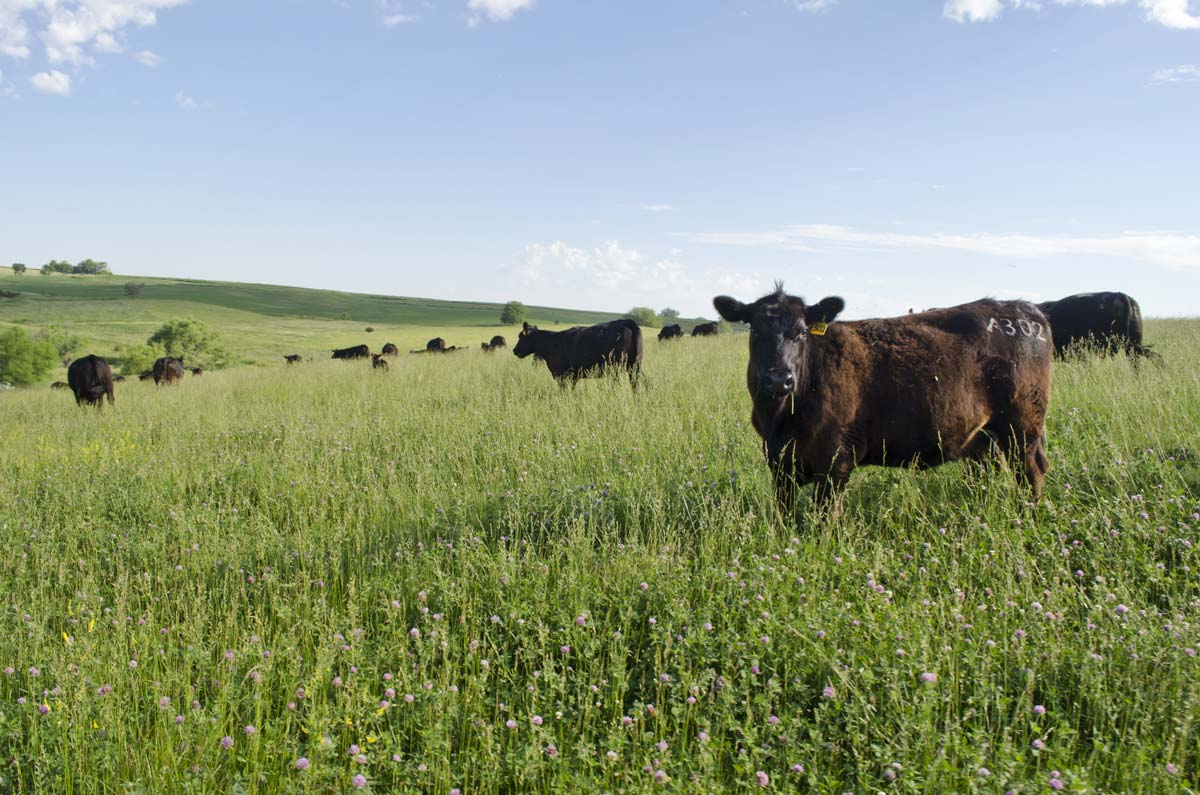Wolfe simmentals
This article originally appeared in the February 2018 Iowa Cattleman magazine. Click here for more information about this year's Bull and Heifer Evaluation Program.
Wolfe Simmentals was born in 1986, when Bill bought his first purebred cow. And since that time, Bill says, some things have changed while others remain the same. “For centuries we’ve had to go out to take care of our cattle,” he says. “But I bought this farm in 1991, and at that time there were 6 other cow herds around the farm…You can see this is rolling country and grows grass real well and corn not so well. But of the 6, the only one left is Matt’s herd.”
Matt, Bill and Jane’s son, has his own commercial herd nearby, and like many young farmers and his father before him, he works off the farm, as well.
Bill had an automotive repair shop in Des Moines when he began farming, which paid for the family’s living expenses and helped make payments on the land he bought near Indianola. Together, he and Jane raised 2 boys on the farm.
Their oldest son, Kelly, is a CPA, but Matt has returned to carry on the family’s tradition of farming. He and his with wife, Emily, are experiencing the challenges of farming first-hand. Matt owns and operates a dirt work company, Midwest Dirt Designs, to supplement the income from his herd. But he was destined to farm. “I think I always knew when he was growing up that he’d be our little farmer boy,” says Jane. “There was just something about him.”
“It’s (the ICA Bull and Heifer Evaluation Program) a great way to compare your cattle to other cattle. They’re fed the same, they’re treated the same and you can see how your cattle perform."
- Bill Wolfe, Prole
The Seedstock Herd
Wolfe Simmentals has always focused on polled cattle, but the herd didn’t transition to black hides until 1994. “When I started, there was a strong interest in Simmental cattle because of their growth and performance. Back then, they were a new breed, and people wanted to give them a try,” Bill says. “Now, they’ve been around longer and definitely have a foothold in the cattle industry and they’re here to stay. People know what to expect with them.”
Bill built his herd to 80 registered cows, before cutting back to the 60 he has now. He has had bulls enrolled in the ICA Bull and Heifer Evaluation Program every year since 1994. “It’s a great way to compare your cattle to other cattle. They’re fed the same, they’re treated the same and you can see how your cattle perform,” he says.
Only the top ¾ of the bulls for each breed are offered in the Symbol of Excellence sales in the spring, and Wolfe has had bulls who have been top gaining and top indexing in the past. The data he’s received over the years has helped him use genetics that make him more competitive with other breeders. One of Bill’s main goals with his seedstock is to improve calving ease and birthweight, using bulls that are average or better for both traits. Now, with the addition of genomic testing for all cattle in the contest, he expects more accuracy among the unproven bulls.
Bill cares for his herd much like a commercial herd, running them on five different fescue pastures in the rolling hills of Warren County. Moving the cattle every 1-2 weeks has helped with weed suppression and grass production, although the drought this summer made things a bit more difficult. When a creek bed dried up, Wolfe began pumping water from a pond three times a day for the cows.
The heifers and cows will be AI’d, and bred heifers, semen and bulls will be sold private treaty off the farm, in addition to those that are entered in to the ICA Bull and Heifer Evaluation Program.
